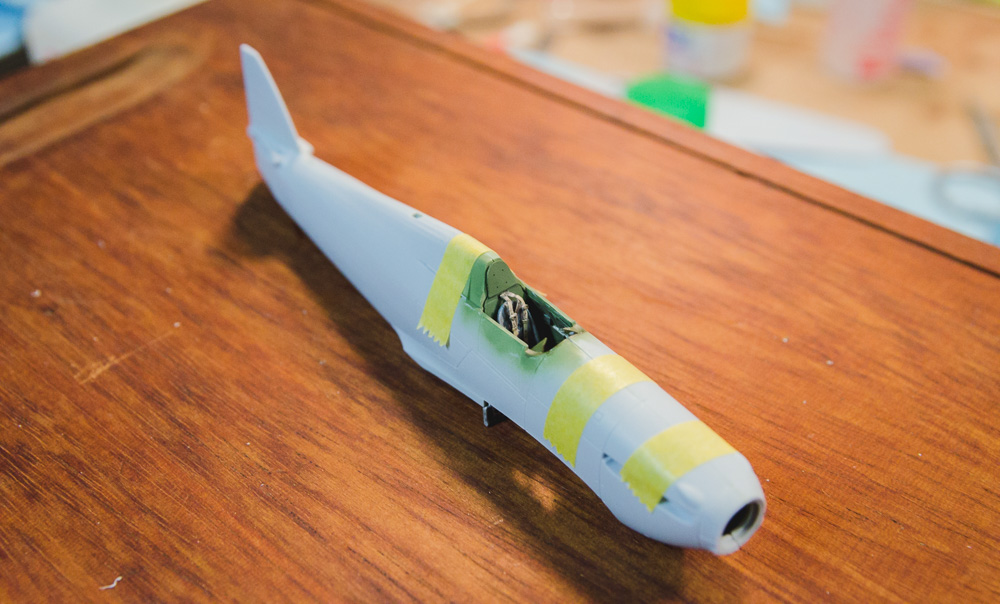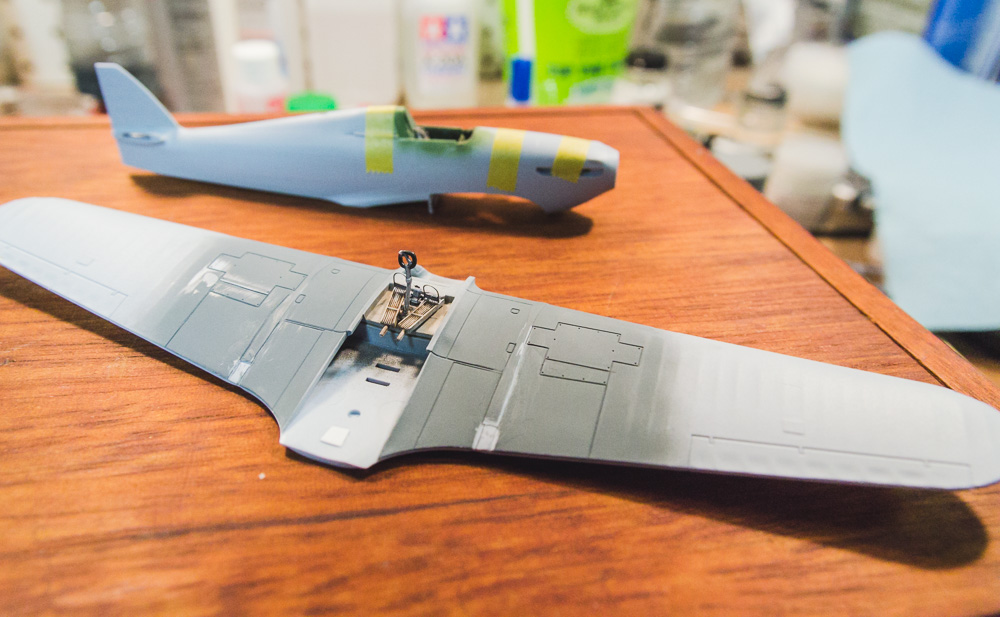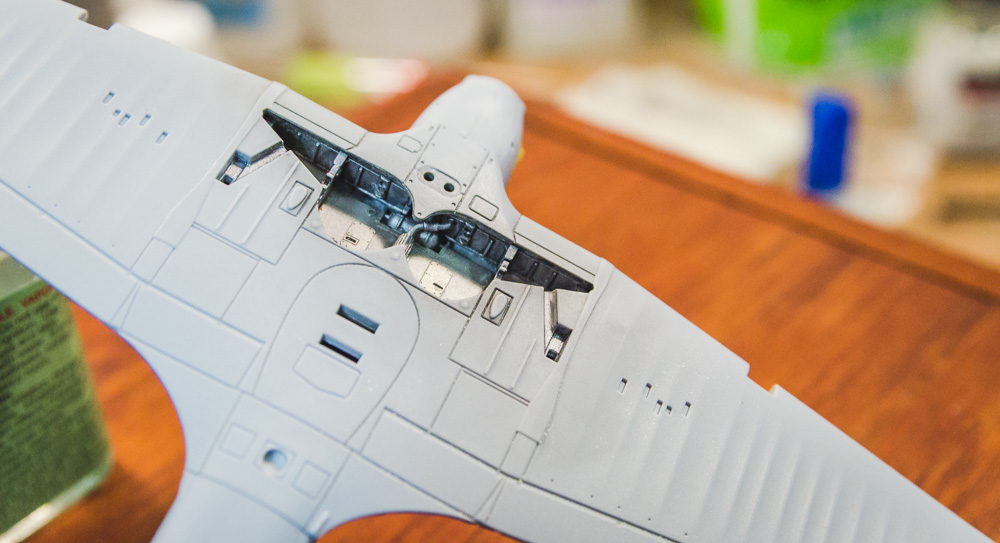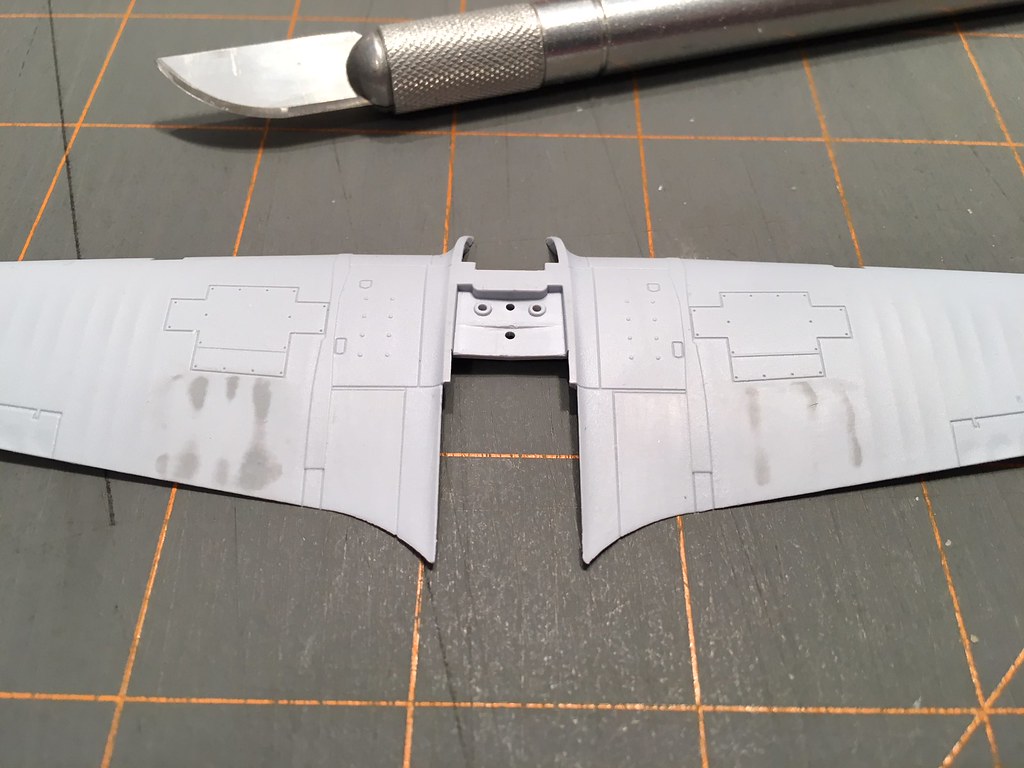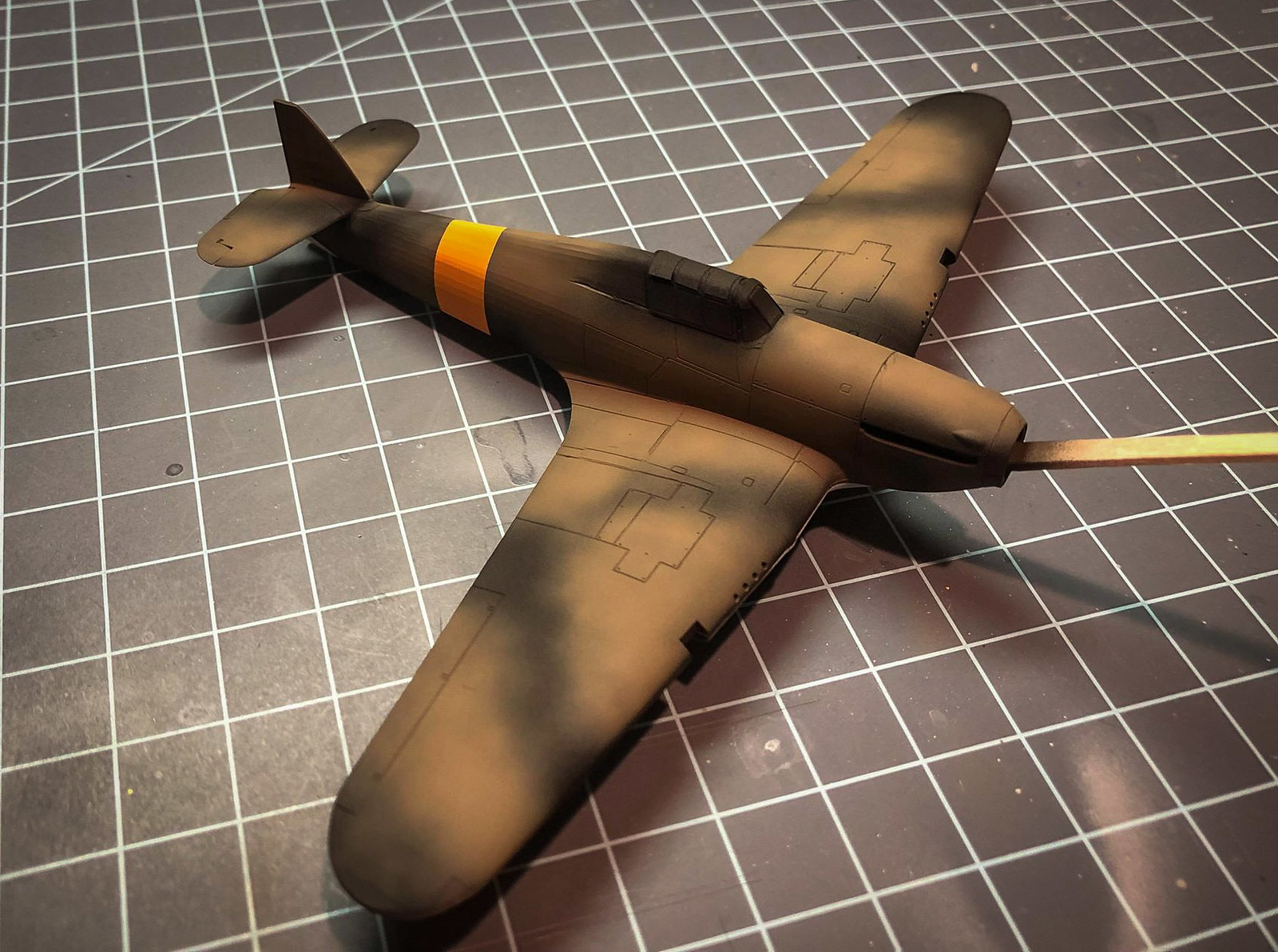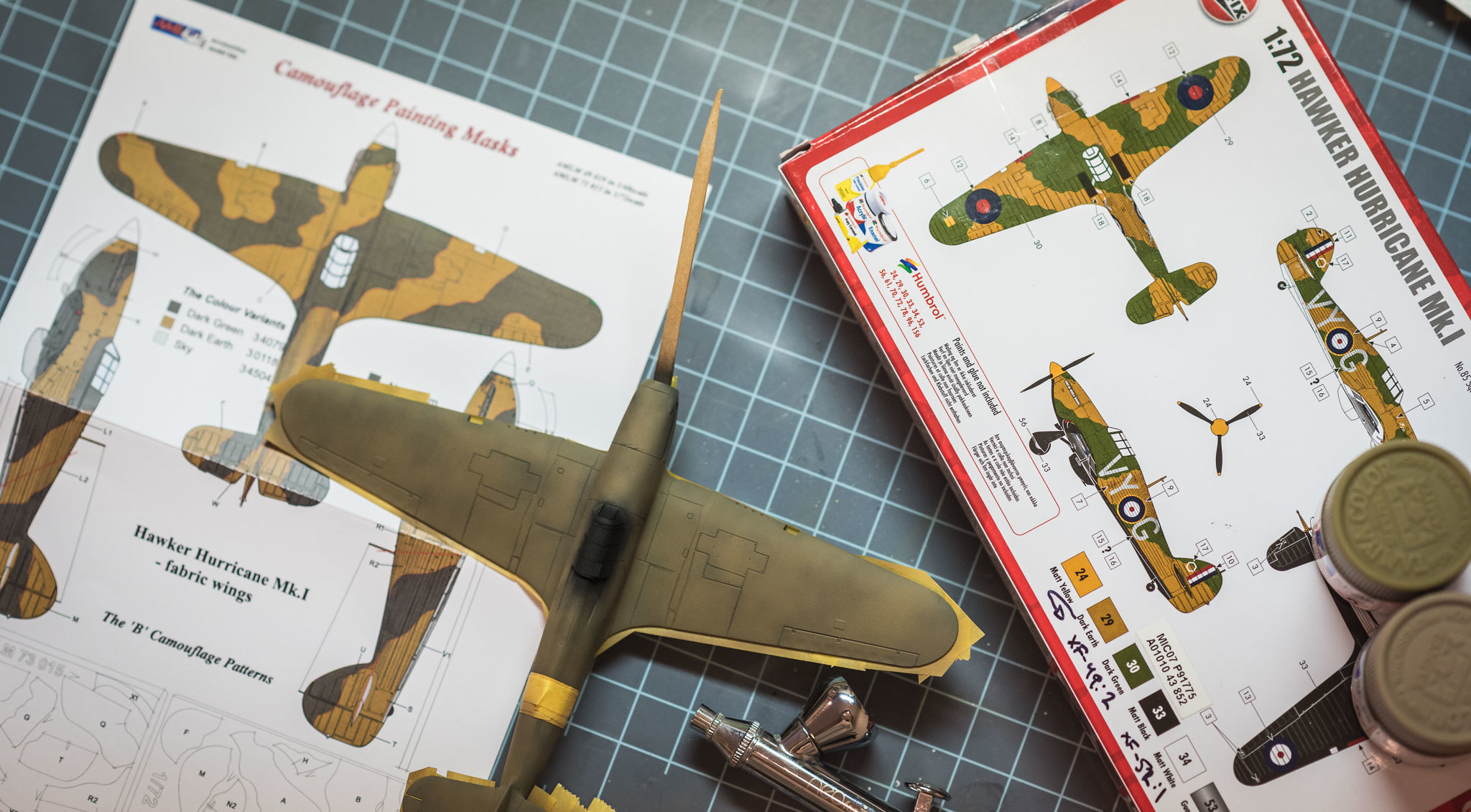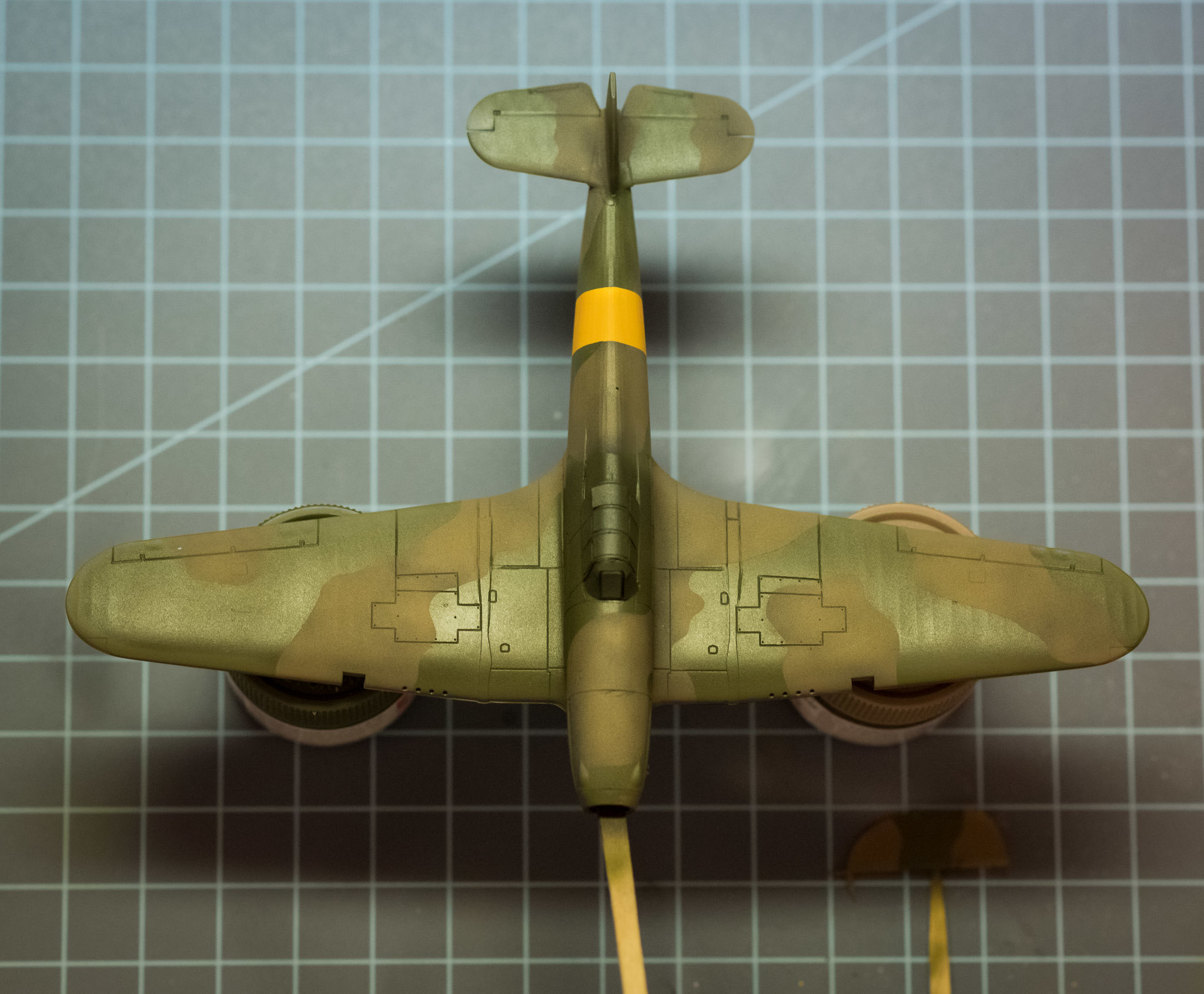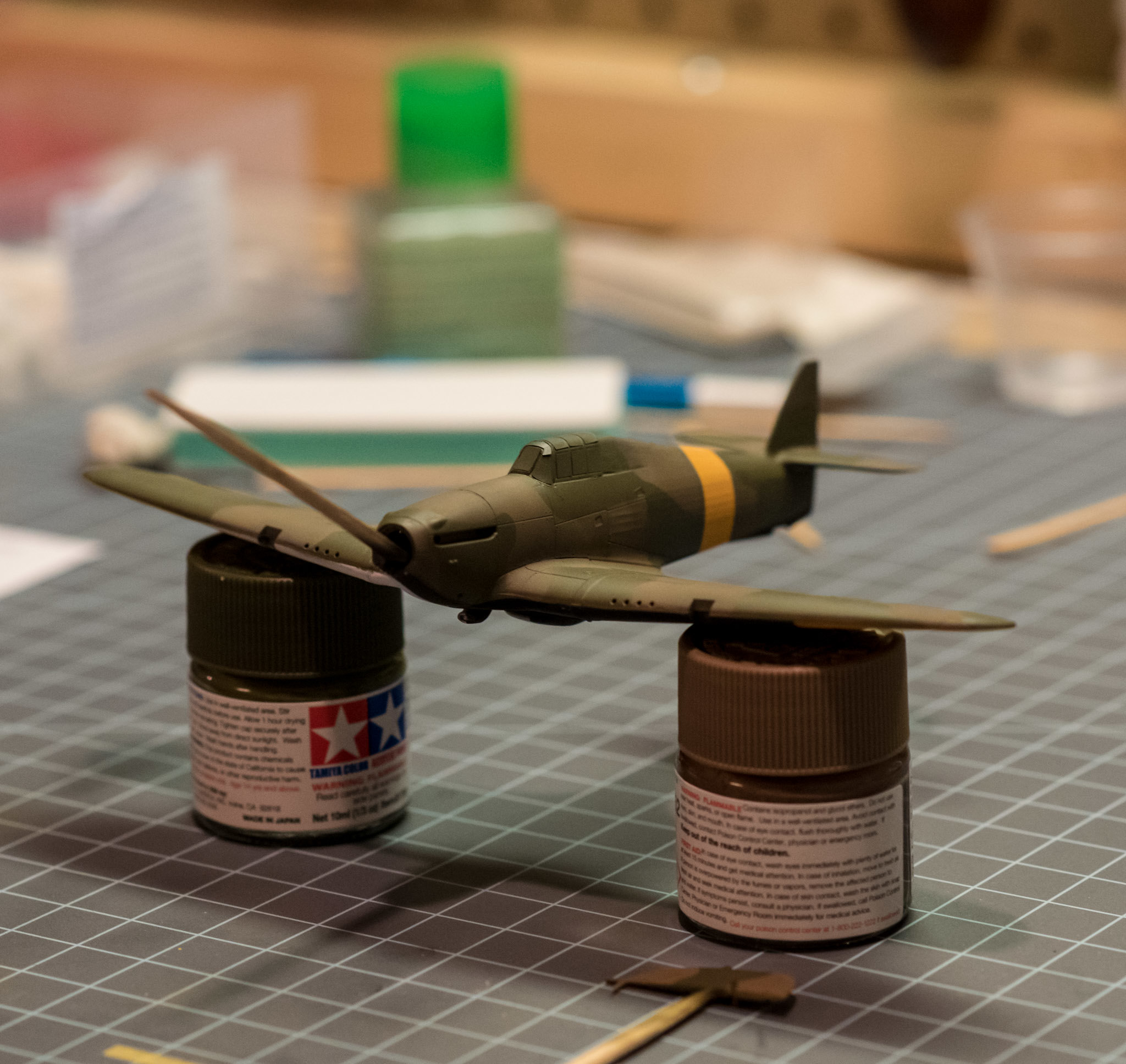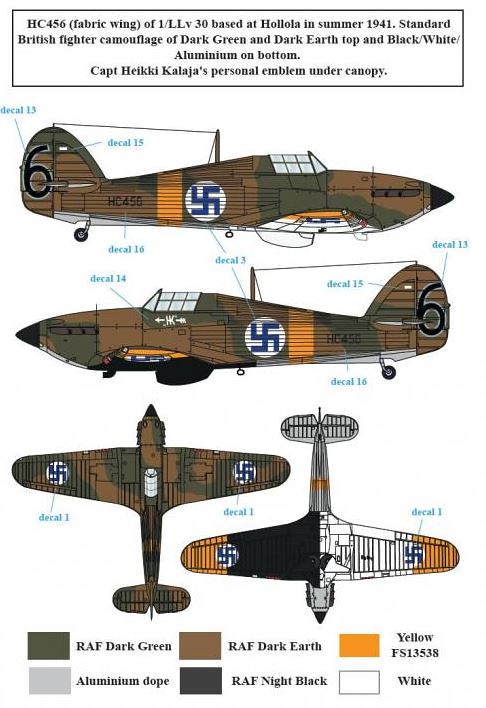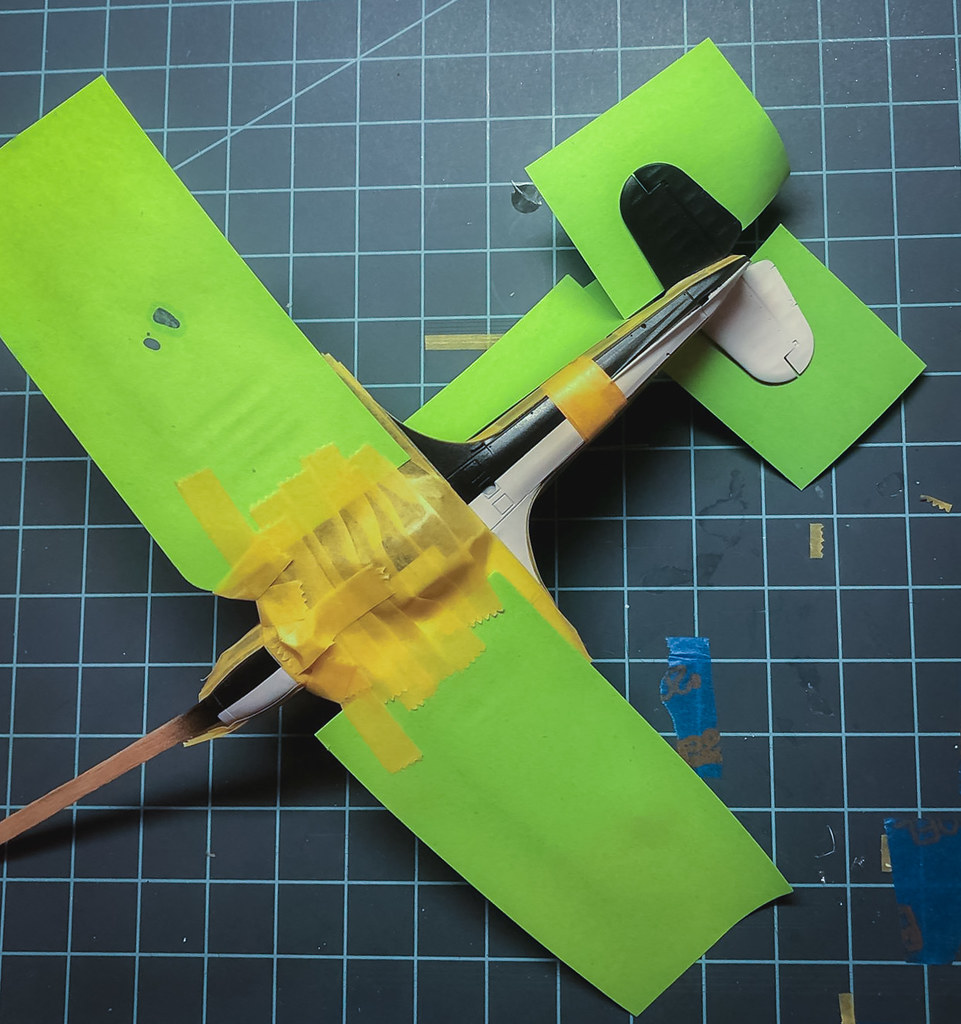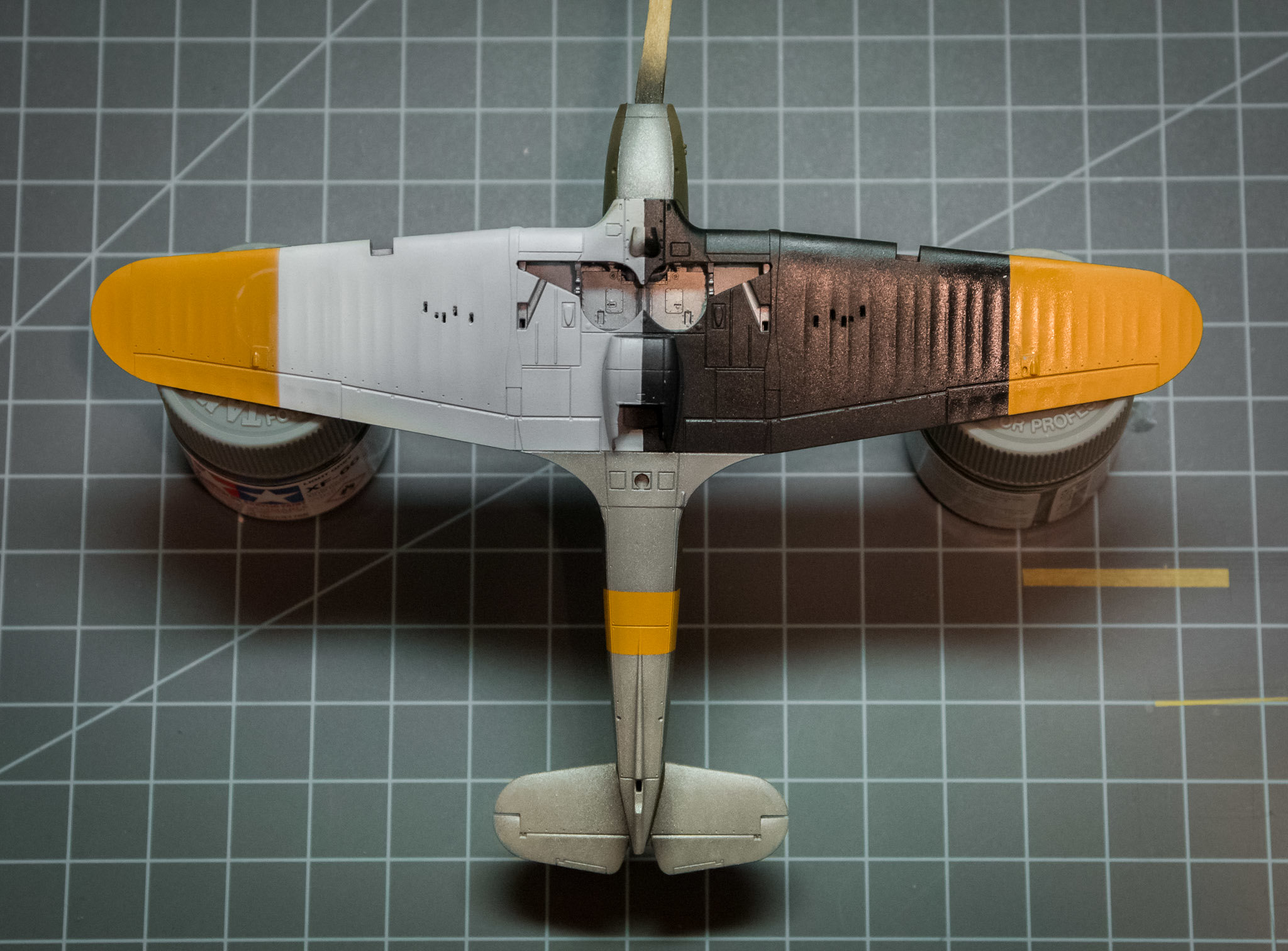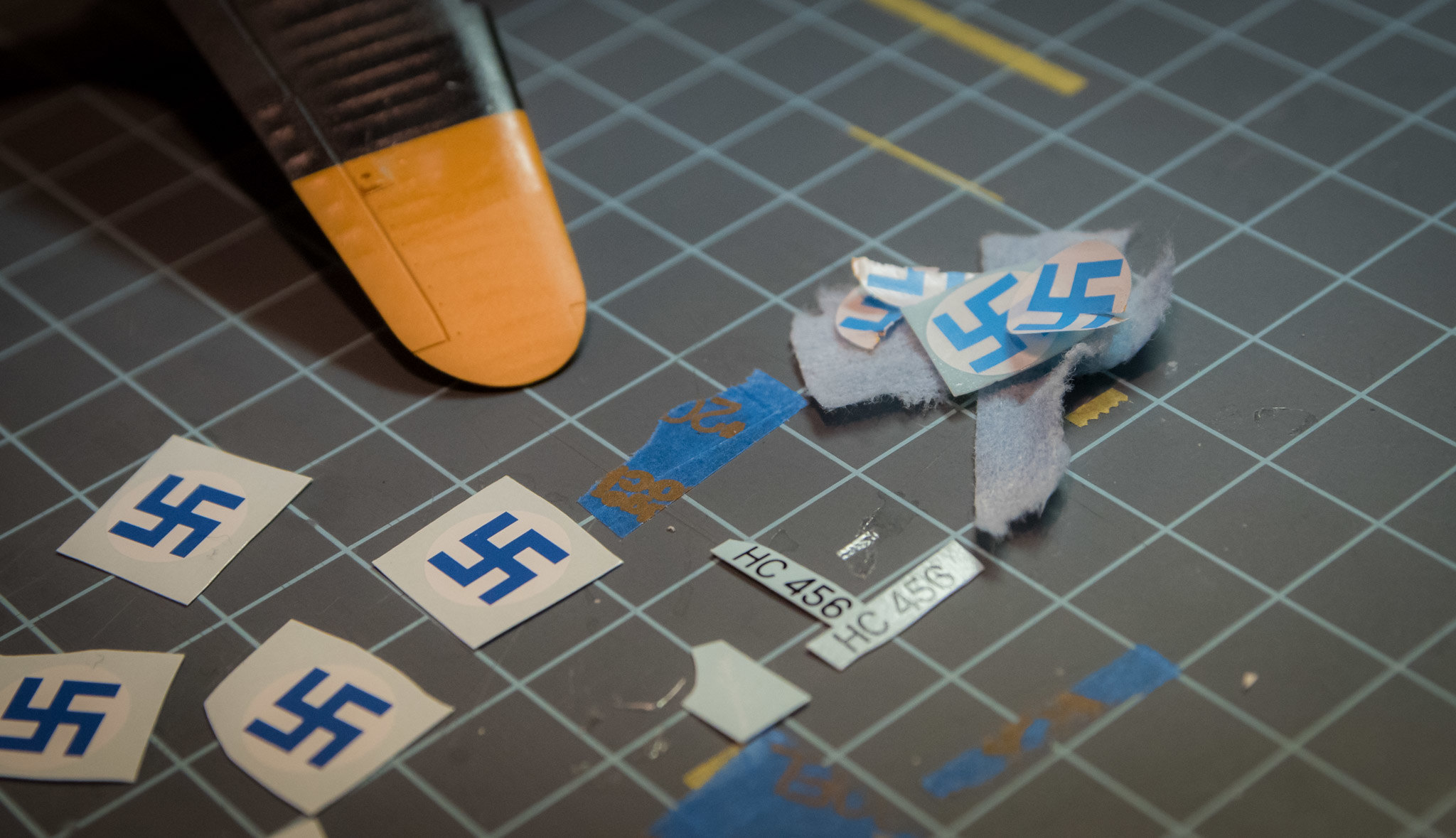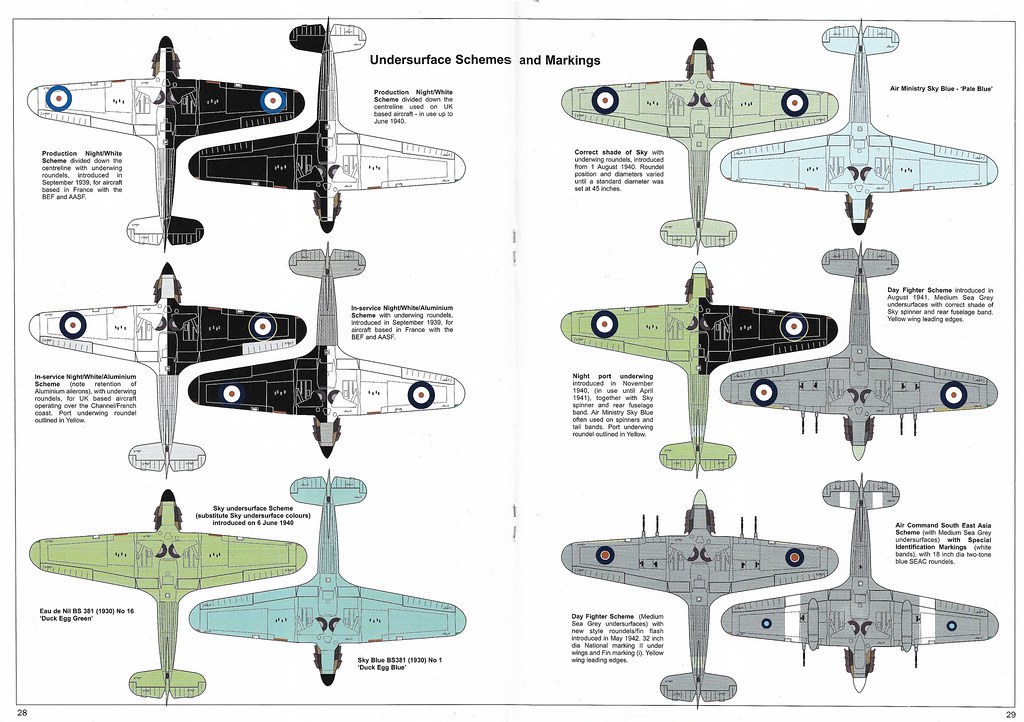Impulse-bought this kit at the LHS for about $10, and liked the look of it so much I couldn’t put off starting it. Luckily my Ms.406 is in its final stages, which requires lots of waiting, so I have got a good jumpstart on this one. When I have time I’ll write up a post on the history of the dozen Hurricanes that GB sent to Finland in 1940; this model will be HC456, a fabric-winger, just after the re-start of hostilities in 1941. This mean she’ll have British paintwork and yellow “Eastern Front” ID stripes, along with standard Finnish serials and insignia.
There are two fabric-winged Airfix Hurricane MkI kits – this one, and another that includes an extra sprue of earlier parts (two-blade prop and an unarmored seat for example).

I also decided to jump into the photoetched metal world with this set from Eduard, which adds lots of detail to an already well-detailed kit (for 1/72). I won’t be using the flaps, as neither the RAF nor the FAF seemed to ever park their Hurricanes with the flaps lowered, from what I’ve seen in lots of period photos.
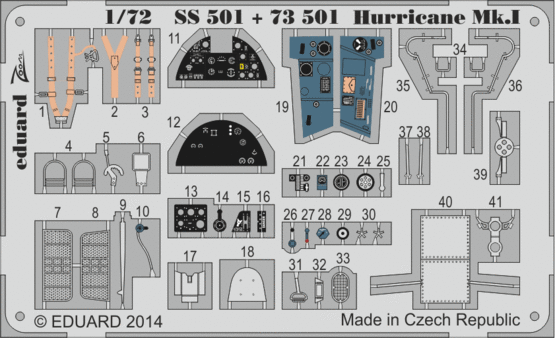
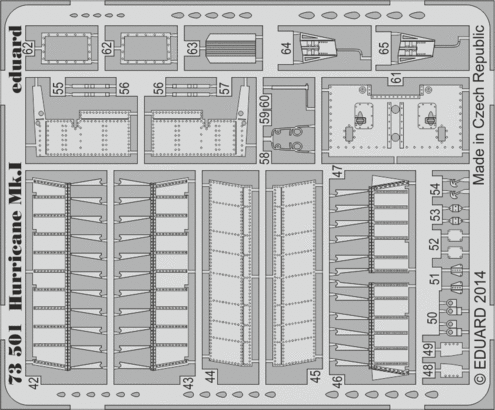
Box and sprue shot!

And right off the bat, the one big issue with these Airfix fabric-wing Hurricane kits: there should be metal panels ahead of and behind the MG access panels, for the crew to work on. The nice fabric wing detail is for some reason extended into these areas and must be filled in. There’s an excellent WIP thread on this same tool on the britmodeller site, which is how I knew about this and a few other issues – solutions in my thread are basically copied from there.
If it’s okay, here’s a link to the BM thread, with good period photo evidence and many other tips/warnings that I’m taking into account to build this model: http://www.britmodeller.com/forums/index.php?/topic/234967780-airfix-172-hawker-hurricane-mk1-fabric-wing/
Here’s the “before” shot of my kit’s wing.
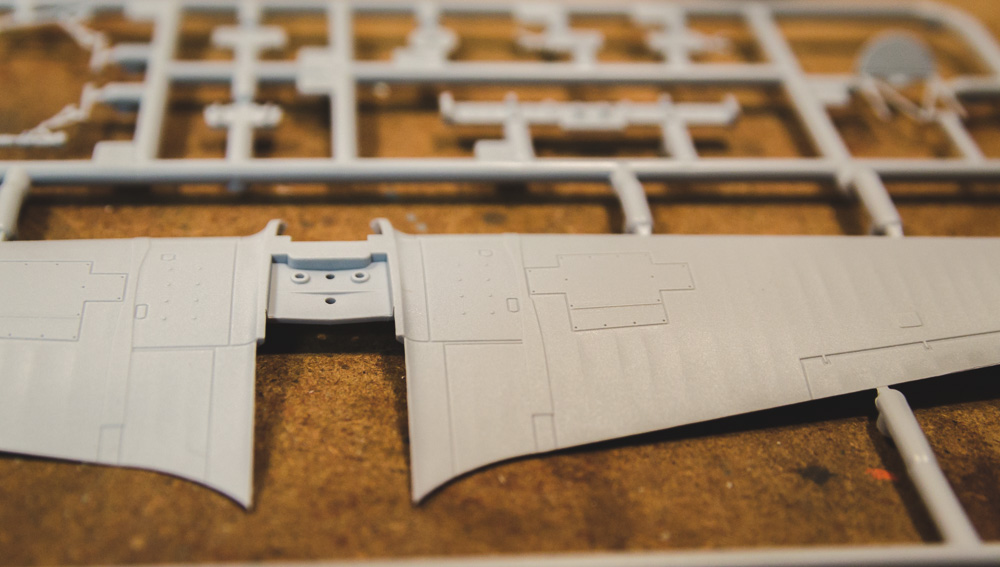
Masked and filled with basic Tamiya putty.
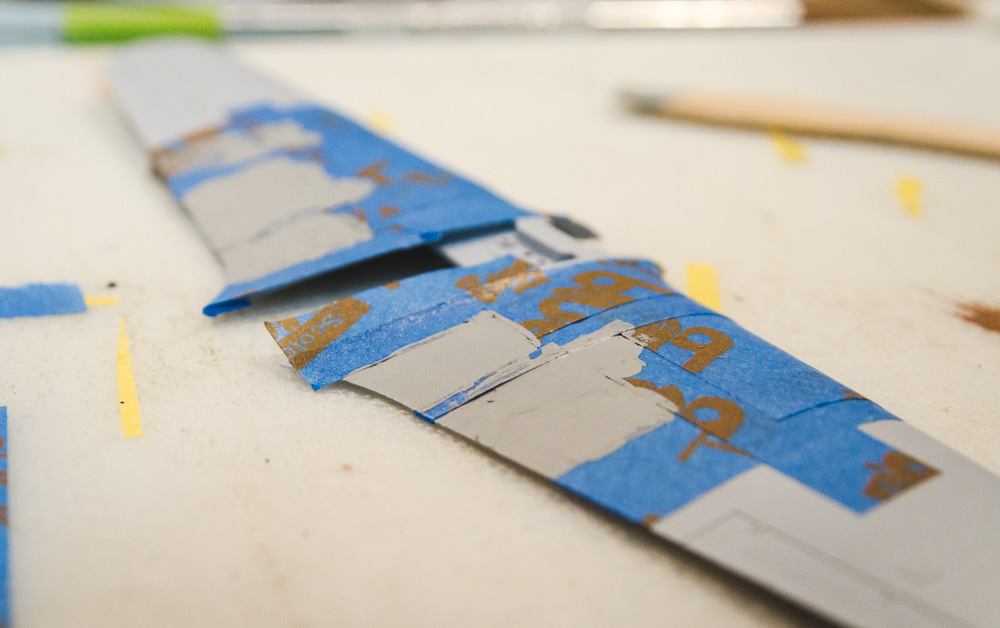
After it dried, I shaped it with a flat needle file and some 1000 grit wetsanding; shot it with a guide coat of flat black (leftover in the airbrush), and then sanded needy areas again:
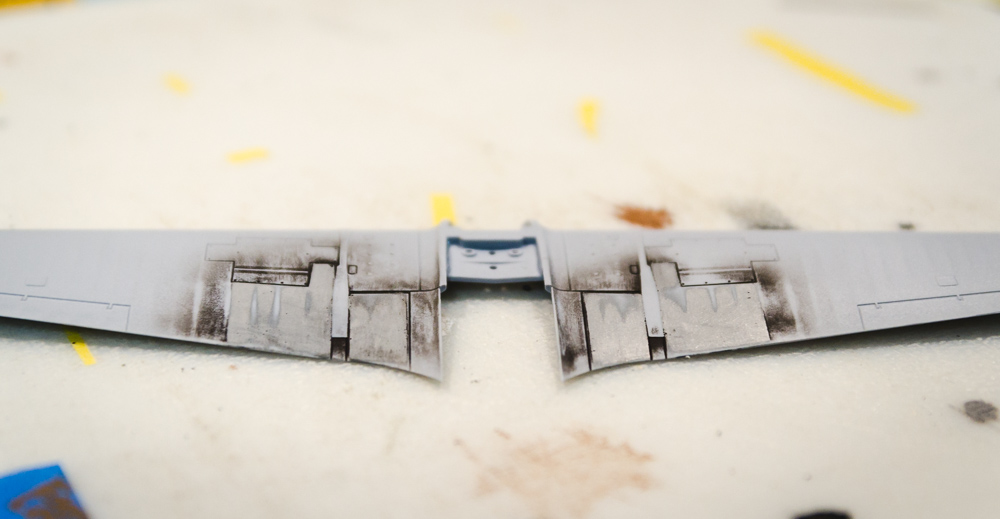
Leading edge of wing, one side done:
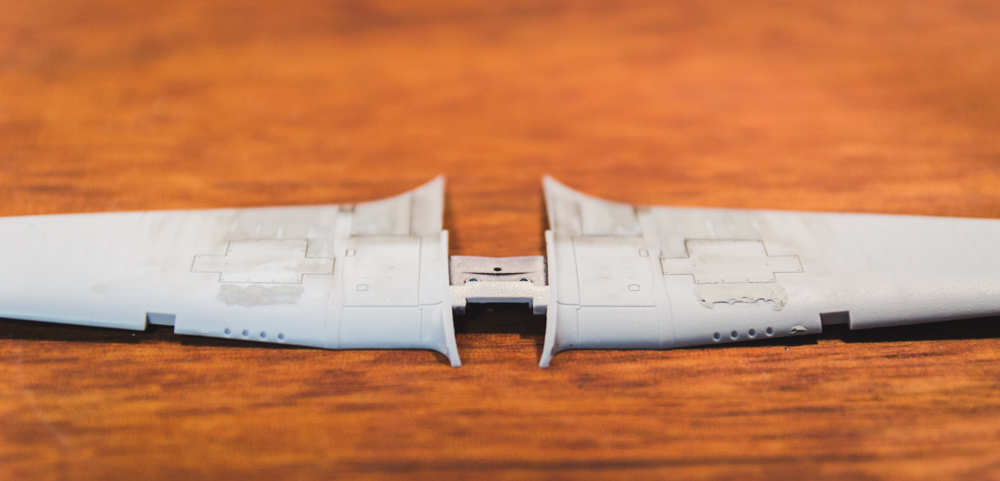
After it was sanded smooth, I had to scribe/rescribe some lines, using my new Tamiya line scriber. Much, much easier than a needle held in a pin vise, but it still needs a good straightedge and some practice. It’s easy to get wavy lines. Here’s my first attempt, revealed by a grey guide coat. I filled it back in with CA glue and rescribed, but haven’t rephotographed it yet.
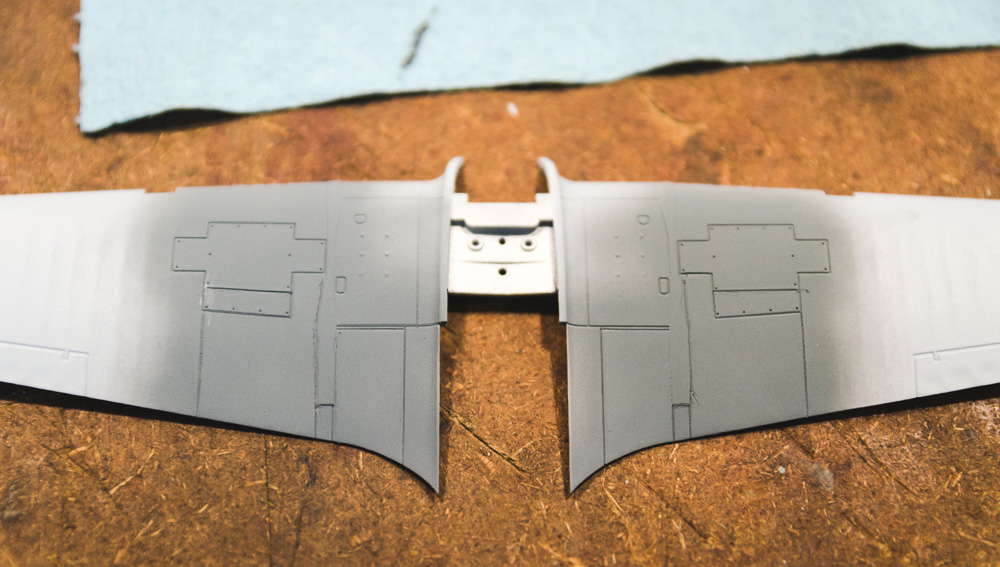
The bottom wing landing gear bay is the first assembly work. The parts need a little fitting, and care must be taken: how these parts fit will really have an impact on how well the top and bottom wings match up. Pay special attention to the foremost “wall” of the bay – it needs to be tilted forward a bit if possible, or I twill force the top wing back out of alignment.
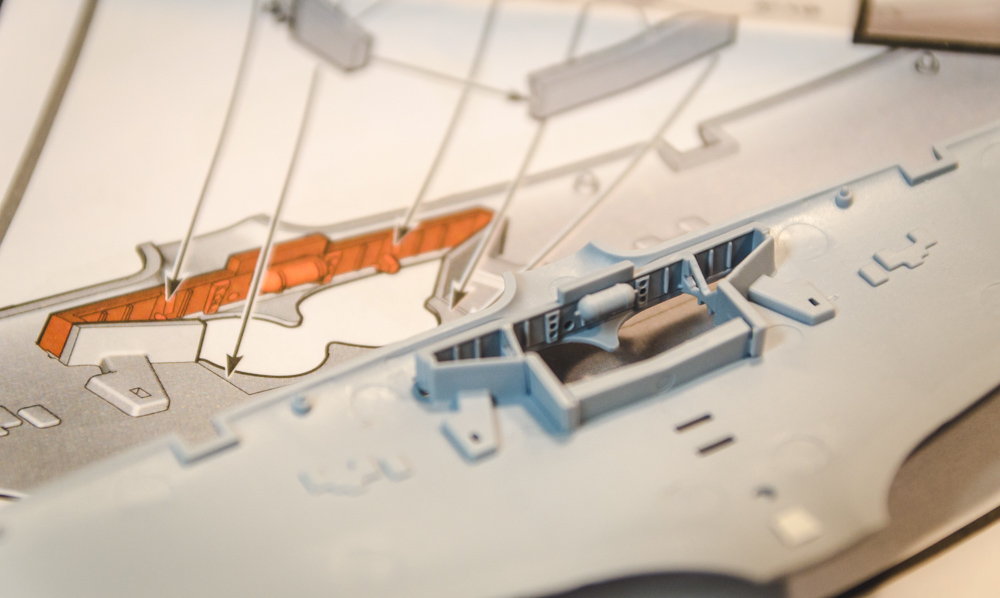
Also on the bottom wing is a hole for a small light. Here is another trick gleaned from that BM thread. Rather than gluing the clear part in now and then masking it for the rest of the build, I put a small bit of styrene backing over the hole and will then glue the light in place from outside at the end of the build.
Here’s the clear part:
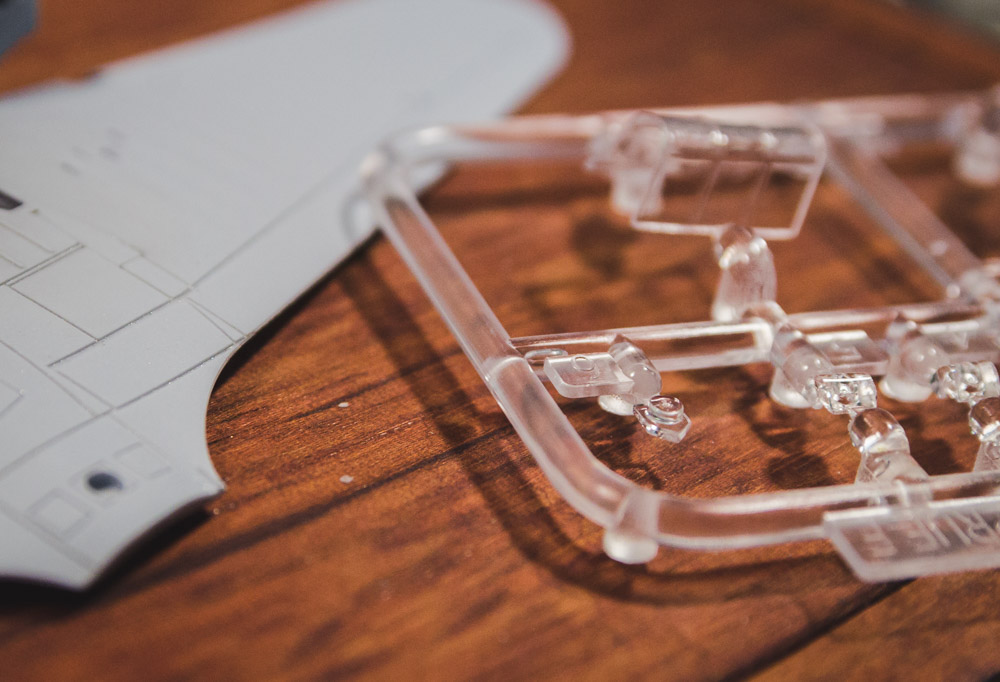
Where it goes (also a peek at the painted landing gear bay):
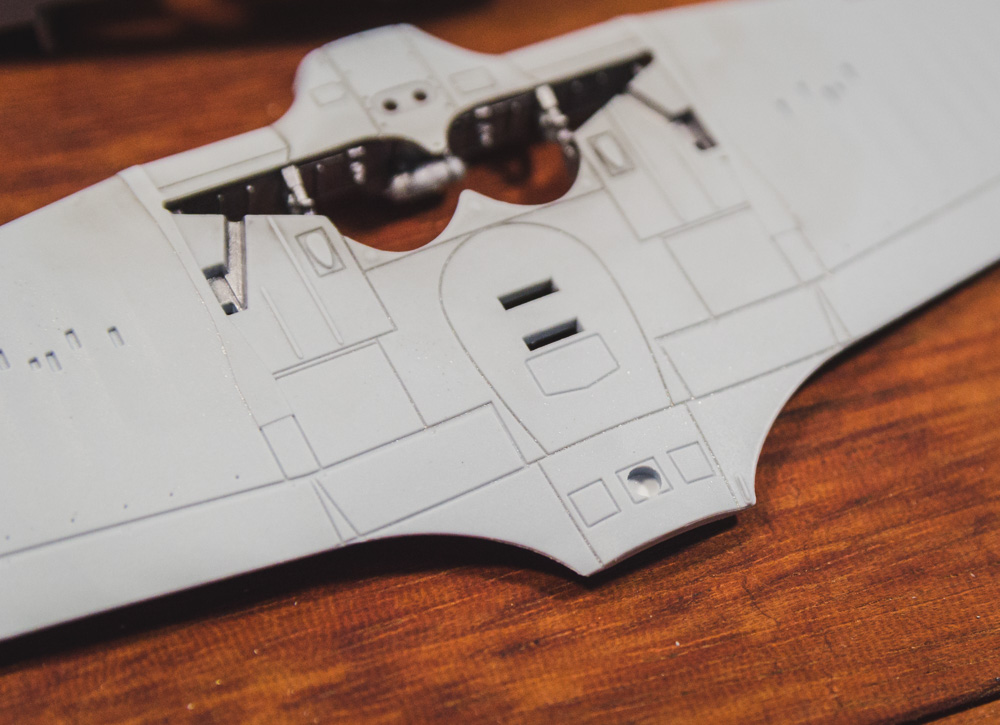
And the styrene backing:

The first PE piece I used went onto the bottom wing half. It’s the roof of the landing gear bay. Easy enough to bend to fit. Notice the ejector pin marks on either side – these ARE visible through the gear opening, so fill/sand them before painting, or afterwards, like I did, and then just repaint. [:^)]
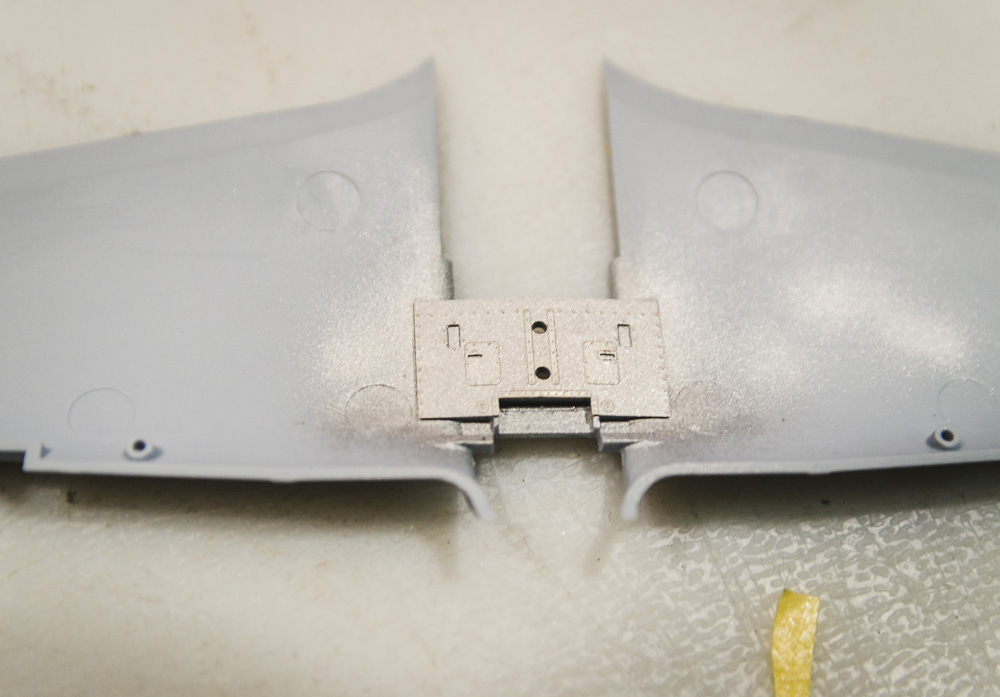
The cockpit detailing went pretty well. Only lost a 2 or 3 of the PE parts, although I dropped one of the lap belts twice (!) and had to have my wife help me find it.
The instrument panel is quite nice, multi-level, with good instruments. I neglected to put a tiny spacer in the compass, so it is a little flat. Too late! Here the floorboards, PE rudder pedals, and yoke are sprayed in Tamiya flat aluminum.
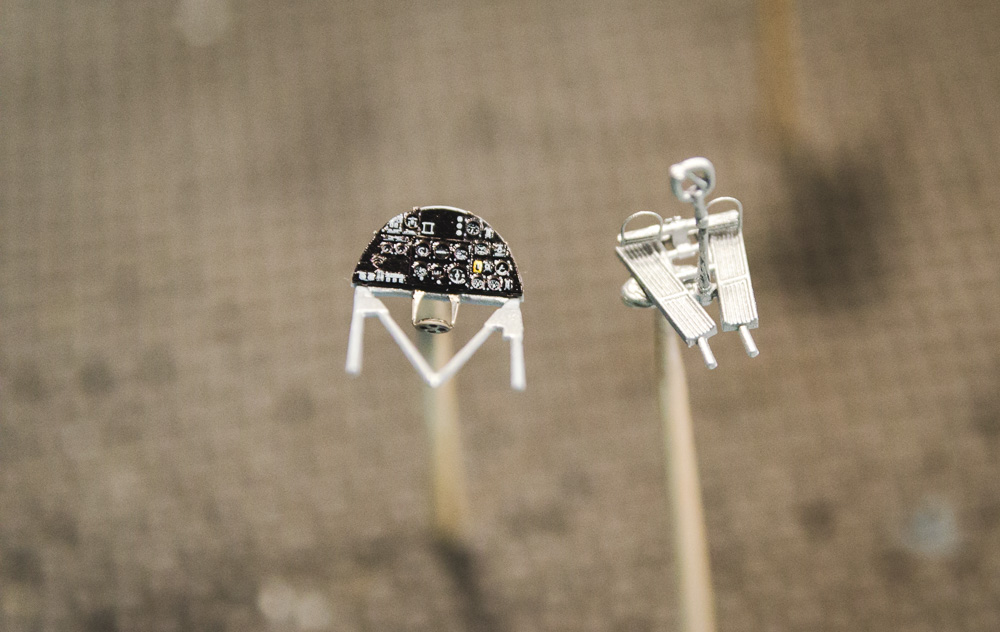
The pre-painted Eduard photo etch is great except for the “cockpit green” which has a rather ugly inkjet pattern to it, and didn’t match my paint anyway. After gluing in place, I resprayed the sidewalls with the Tamiya “cockpit green” and then, after letting it dry for a minute or two, I used a toothpick dipped in thinner to scrub the instruments clean.
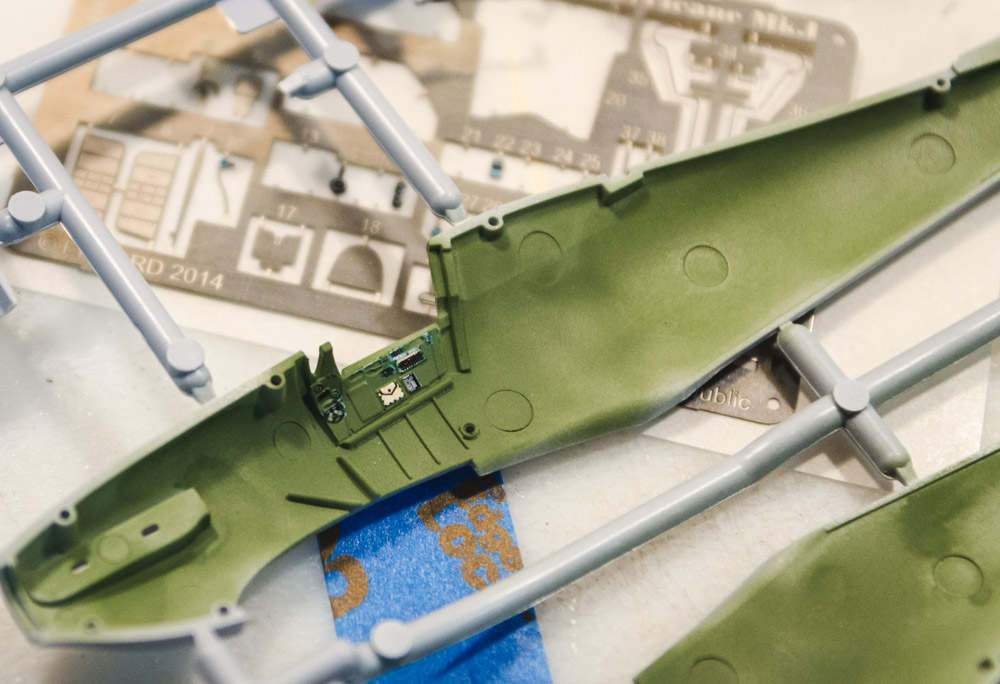
The seat back bulkhead seemed to have a little too much armor on it. The Finnish Hurricanes arrived without pilot armor, but it was installed in 4/40, before hostilities. This bird did have it – but photos of the original Finnish Hurricane don’t seem to match the kit.
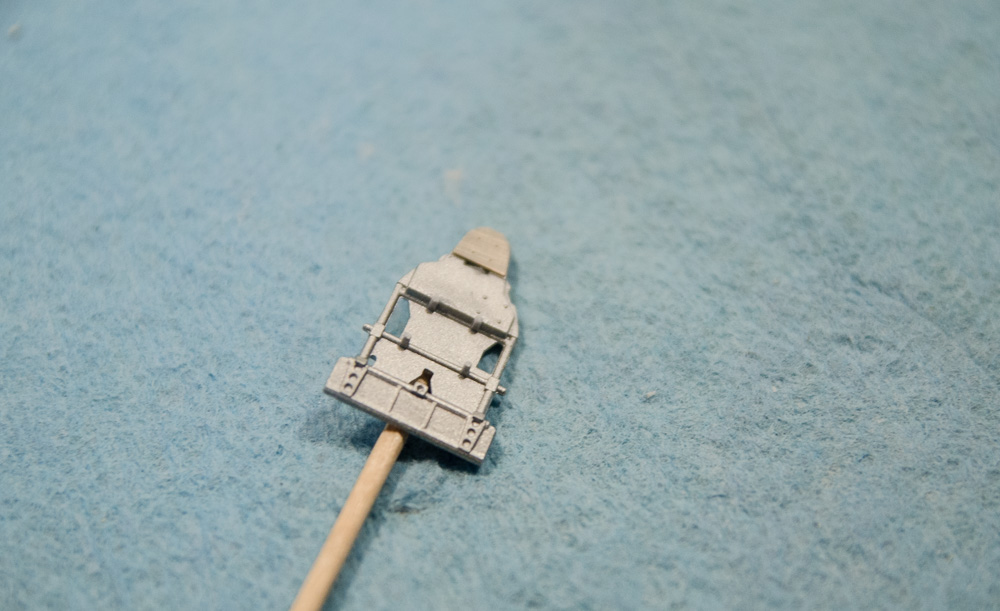

So I cut/filed off the extra armor, leaving only the headrest armor PE part to match the actual example. (If I’d bought the other Airfix MkI kit, it has this part, w/o armor, included.) Here it is repainted (hand brushed for now) along with the seat and belts.
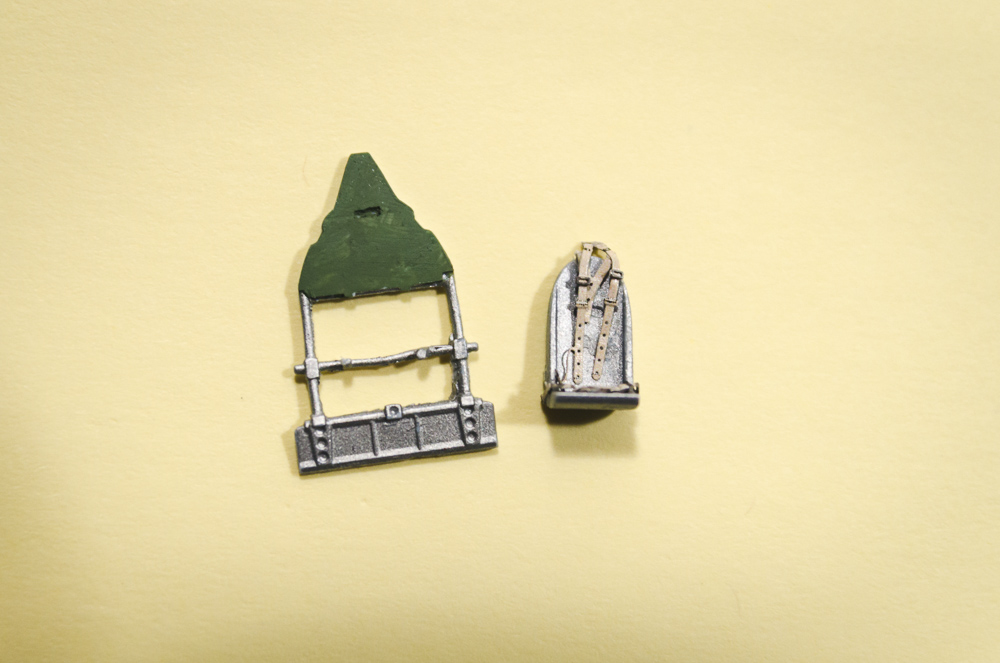
Notice the dark spot on the back of the seat. CA glue sticks to Tamiya paint better than Tamiya paint sticks to plastic, and it will peel it right off. The good news is, it looks even more like the real thing, now! Except for that dang leather (?) cushion in the other photos… never mind that…

And now everything ready for assembly. Between the above steps and these photos are a final “cockpit green” spray for the seat back bulkhead and headrest armor, a Future coat, a wash with “The Detailer, black”, touch ups, dull coat, and lastly a dirt dusting with ground pastels.
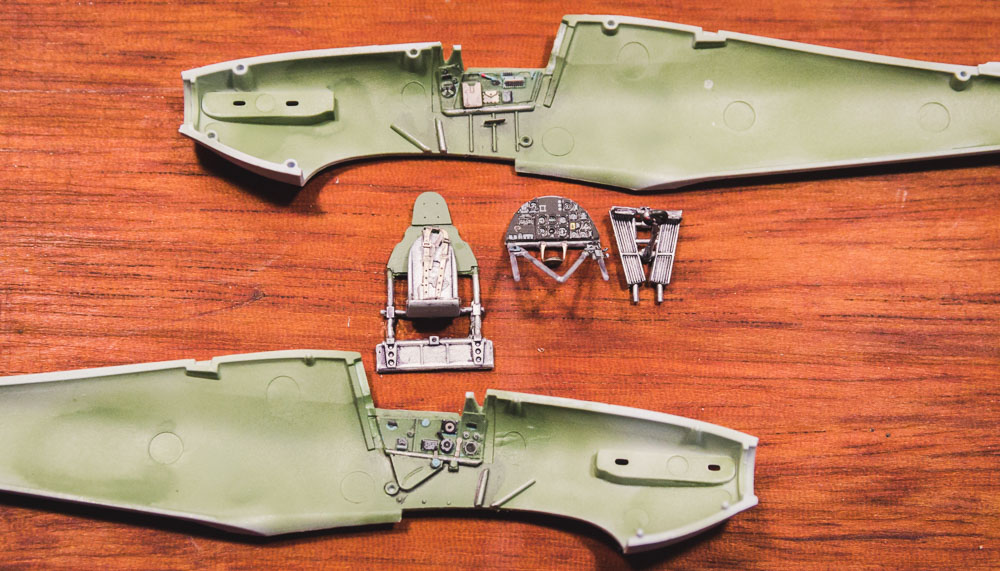
And now assembly. As I installed each part, after lots of test fitting, I only glued one side but pressed the fuselage halves together tightly to hold the interior parts in good position while the CA glue set. Care needs to be taken with these assemblies, as the PE makes some parts thicker than the recesses they are supposed fit into, and in some cases overlaps the recesses. Lots of small adjustments were made to get everything to fit tight.
Also shaped and thinned the gunsight cross-bar (will add a small bit of “tubing” once fuse halves are glued). The fuselage skin that extends across here, underneath the windscreen, is outer fuselage color, not cockpit green.
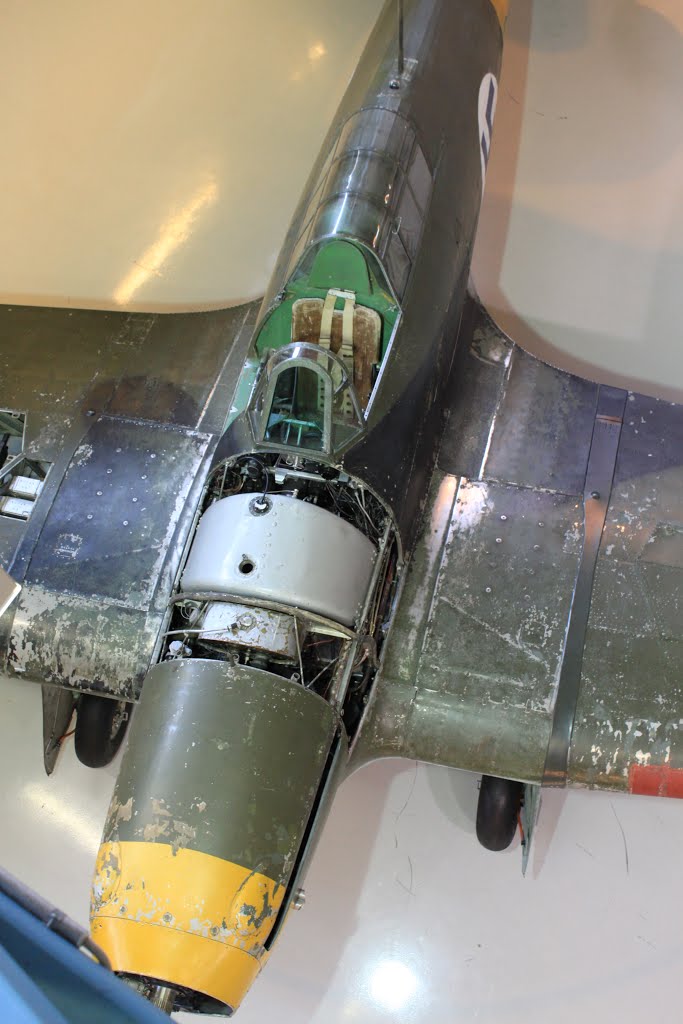
Need to figure out what to do about a sight – what the Finnish Hurricanes had. Time to hit the books.
I took lots of photos of this since a lot of it will be hidden once everything is buttoned up. I do plan to install the canopy open.
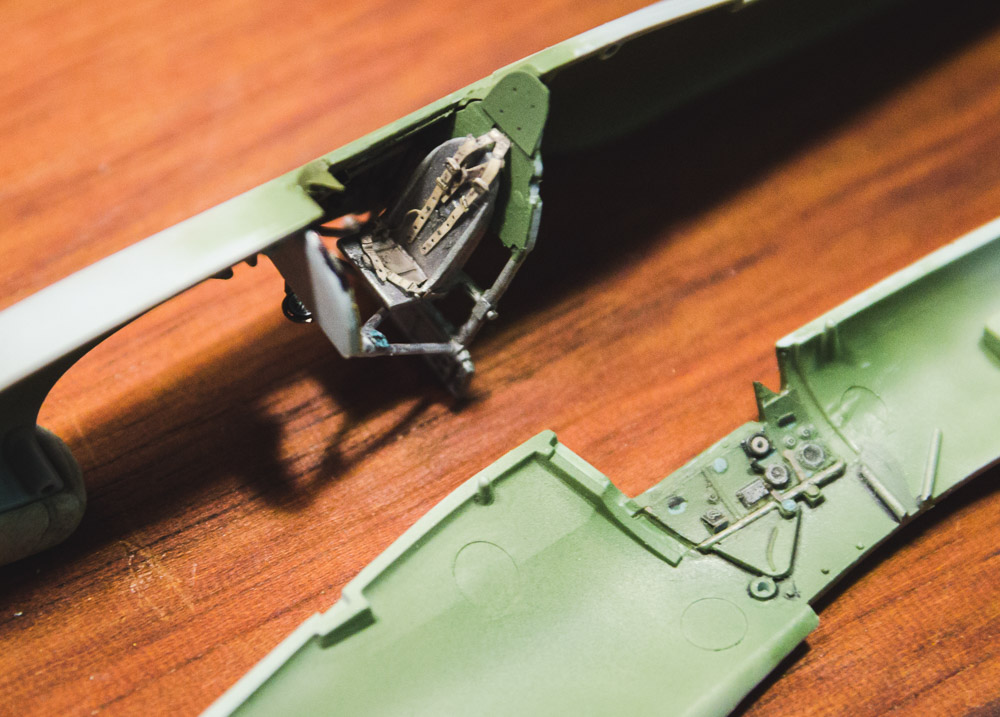
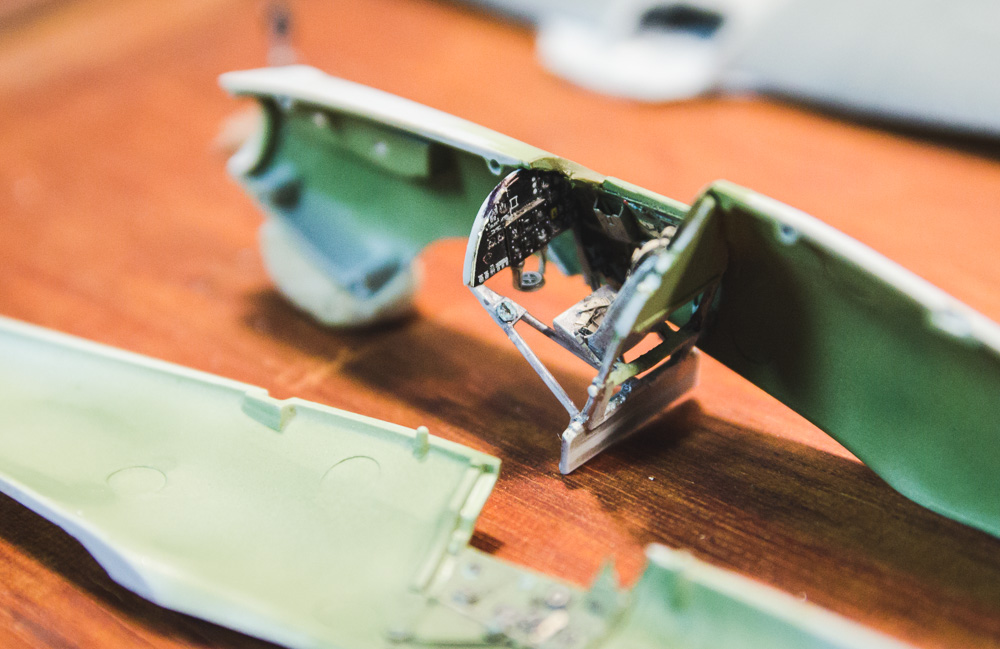
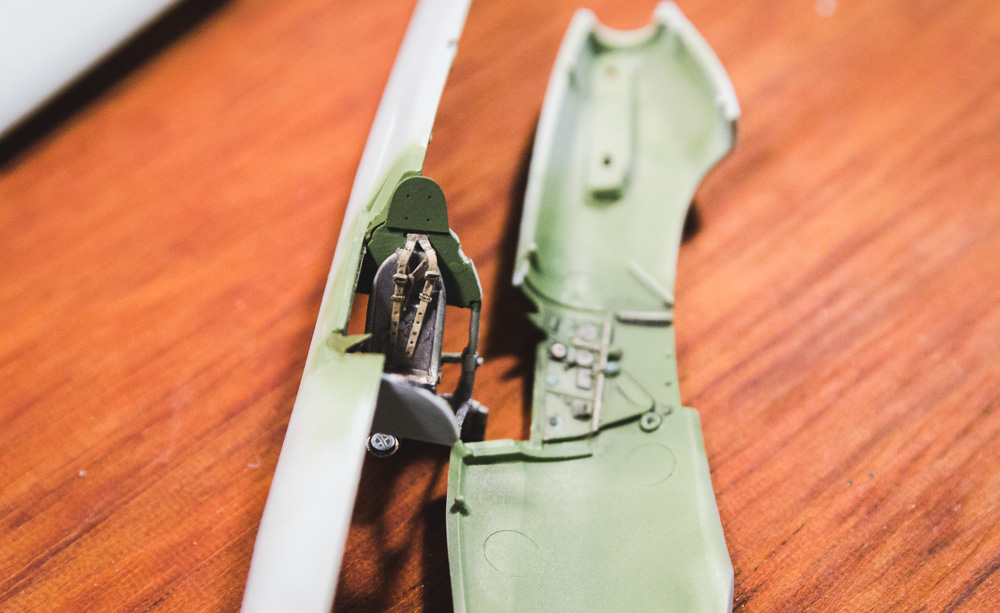
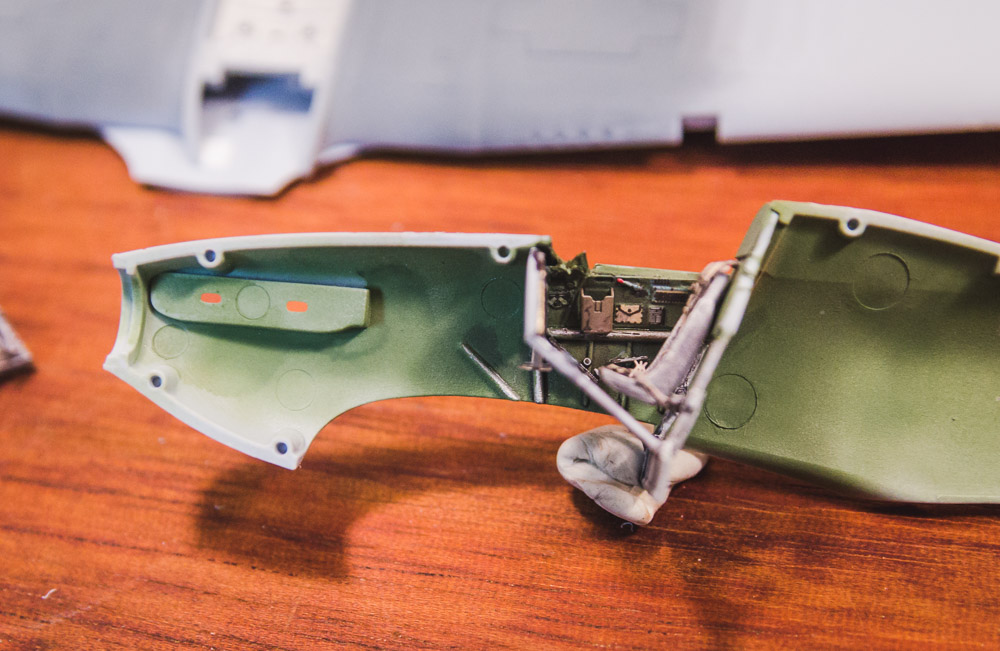
Floorboards with a nice coat of dirt. These attach to the wing and come up through fuselage bottom. That’ll be tricky, I can already tell.
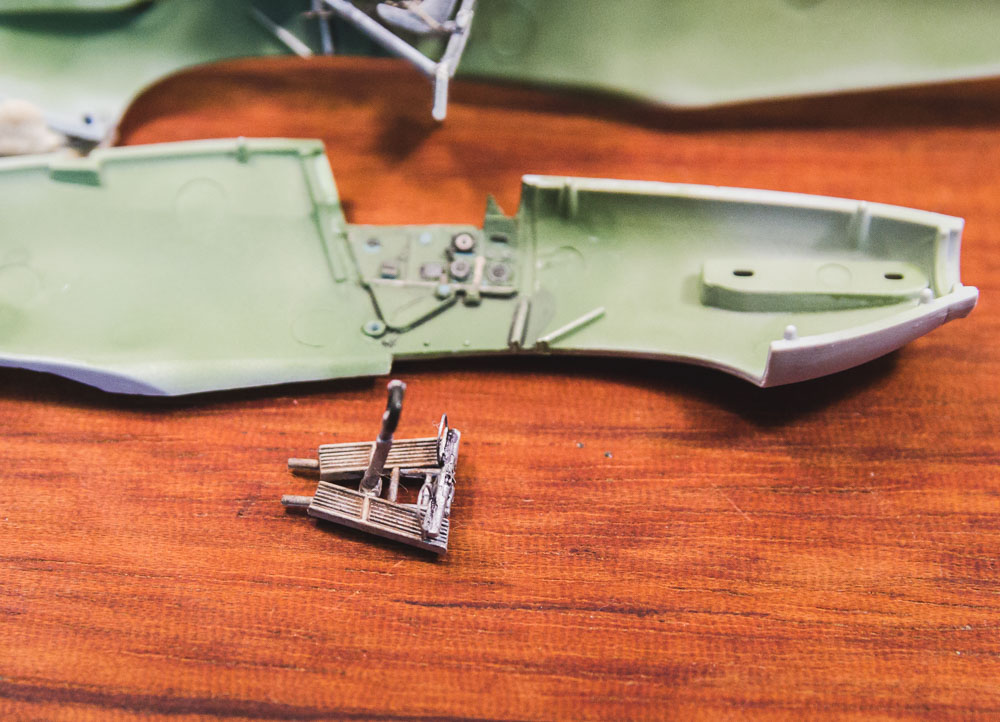
Got the wing top and bottom glued together at the end of last night (fit could be a lot better, but I can work with it) and so here’s where she sits right now.
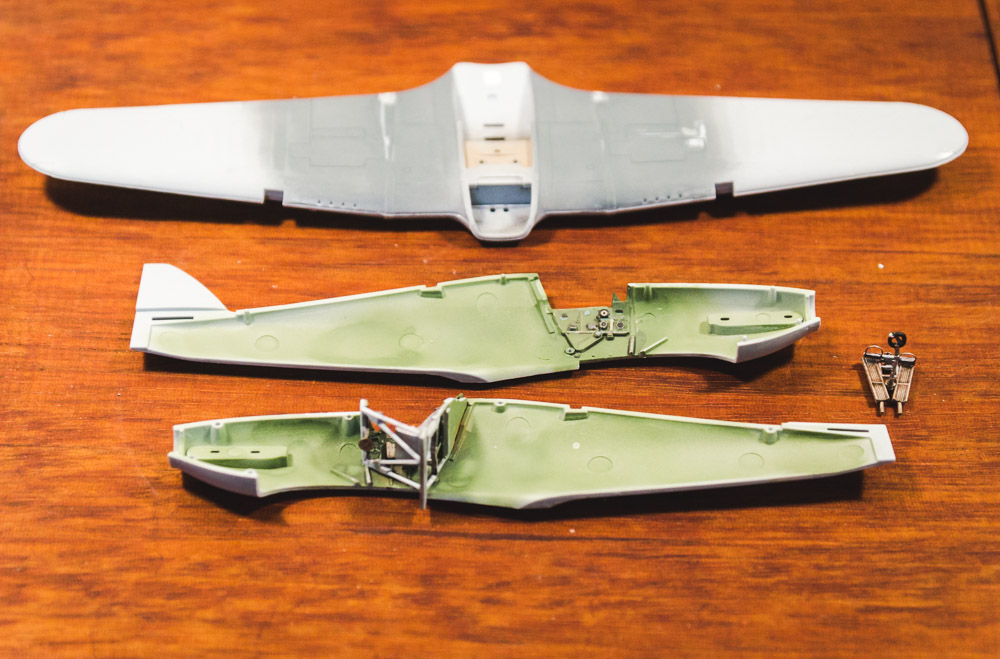
Thanks for reading all the way through. Trying to be thorough, given how much I enjoy others’ detailed WIP posts. All feedback/ideas welcome.
